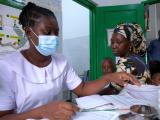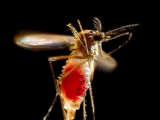Jul 12, 2011
Ireland reports H1N1 vaccine narcolepsy cases
Irish drug regulators have received five more reports of narcolepsy cases that may be linked to the 2009 H1N1 vaccine, raising the nation's total so far to 13, the Independent, a Dublin-based newspaper, reported yesterday. The Irish cases are part of a larger probe by the European Medicines Agency (EMA) into links between narcolepsy and GlaxoSmithKline's Pandemrix 2009 H1N1 vaccine. Most of the cases have been reported from Scandinavian countries. The EMA report is expected some time in July, according to previous reports. In April Ireland pulled its remaining Pandemrix doses.
Jul 11 Independent story
Mar 28 CIDRAP News Scan
Gene marker can predict flu vaccine response
A research group writing in Nature Immunology has identified genetic markers that can be used to predict a few days after flu immunization if a vaccine recipient will produce high levels of antibodies, according to a press release from Emory University. The group analyzed genetic activity in blood samples that were obtained from healthy young adults during the 2007, 2008, and 2009 flu seasons. They found a host of activity changes after flu vaccination. They used data from a subset of patients in one flu season to "train" a computer model to identify select genes to predict high and low responders in two other flu seasons. This systems biology approach helped the team discover new gene functions, even when they did not previously suspect that they were involved in antibody response. Dr Bali Pulendran, senior author of the study and professor of pathology and laboratory medicine at Emory, said in the press release that the research group is encouraged, because the gene subset is the same that had earlier predicted antibody response to the yellow fever vaccine. He said the genetic markers could be used to guide the development of vaccines against emerging infections and that the team has developed an assay that could be incorporated into a gene chip to make predictions more cost effective.
Jul 11 Emory University press release
PharmAthene's anthrax vaccine meets stability goal
PharmAthene, a pharmaceutical company based in Annapolis, Md., announced today that its recombinant protective antigen (rPA) anthrax vaccine, SparVax, has met an important development achievement by demonstrating 36-month stability. The company is developing the vaccine under a contract with the Biomedical Advanced Research and Development Authority (BARDA). Dr Thomas Fuerst, PharmAthene's president and chief scientific officer, said in the statement that stability has been a stumbling block for rPA anthrax vaccine programs. "So we're especially excited about these ongoing results, which represent an important breakthrough for PharmAthene's rPA vaccine program," he said. The US government is funding the development of second-generation anthrax vaccines that require fewer doses and have fewer side effects.
CIA staged vaccination drive to try to collect bin Laden DNA
As part of efforts to pinpoint the hiding place of Osama bin Laden, the US Central Intelligence Agency (CIA) tried to collect DNA from his family by organizing a fake vaccination program in the Pakistani town where he was believe to be living, the British newspaper the Guardian reported yesterday. The plan was conceived after the CIA tracked an al Qaeda courier to the bin Laden compound in Abbottabad last summer, the story said. The CIA hoped to obtain DNA from any of the terrorist's children and compare it with DNA from his sister, who died in Boston in 2010. CIA agents recruited a senior Pakistani doctor, Shakil Afridi, to set up the program in Abbottabad, Pakistani sources and local residents told the newspaper. The story said Afridi went to Abbottabad in March and said he had obtained funds to give free hepatitis B shots. He bypassed local health services managers and paid "generous sums" to low-ranking local health workers to participate in the vaccination drive. The workers first administered the vaccine in a poor neighborhood on the edge of Abbottabad in March, and in April they moved the campaign to the suburb where bin Laden lived. A nurse managed to get into the bin Laden compound to give the vaccine, but it was not clear whether she obtained any DNA, according to the story. Bin Laden was killed by US commandoes in a raid on the compound in May. Afridi has since been arrested by Pakistan's Inter-Services Intelligence Agency for cooperating with the CIA, according to the story.
Jul 11 Guardian story
Researchers demonstrate how malaria parasite hides in placenta
The parasite that causes malaria is able to hide from the immune defenses of pregnant women, which allows it to attack the placenta and harm both mother and unborn child, according to researchers from Denmark, Ghana, and the United Kingdom. In studying blood from a pregnant Ghanaian woman infected with Plasmodium falciparum, the parasite that causes the most severe cases of malaria, the team found that the P falciparum erythrocyte membrane protein 1 (PfEMP1) plays a central role. They determined that P falciparum infection in the women involved masking of PfEMP1-specific immunoglobulin G (IgG) epitopes by nonspecific IgM. Nonspecific IgM binding to erythrocytes infected by parasites expressing the PfEMP1 protein VAR2CSA—which is involved in placental malaria pathogenesis and protective immunity—blocked subsequent specific binding of human monoclonal IgG. The authors conclude, "Taken together, our results indicate that the VAR2CSA affinity for nonspecific IgM has evolved to allow placenta-sequestering P falciparum to evade acquired protective immunity." Lead researcher Lars Hviid of the University of Copenhagen said in a news release, "In an advanced version of hide-and-seek the parasites keep looking for new ways of preventing the antibodies from recognising them. . . . The first time an African woman conceives, her placenta provides a new opportunity for the parasite to hide: a new house, so to speak, and in a way that prevents discovery by the immune system. It takes time for the immune defences to react to the new threat, and meanwhile the camouflaged parasite harms the woman and her unborn child."
Jul 11 Proc Natl Acad Sci study
Jul 11 University of Copenhagen news release



















